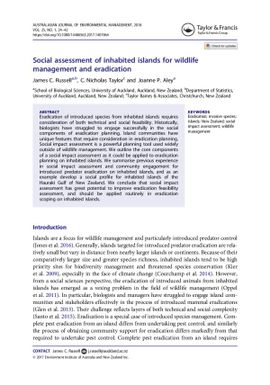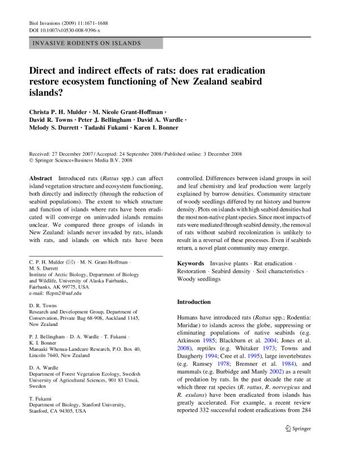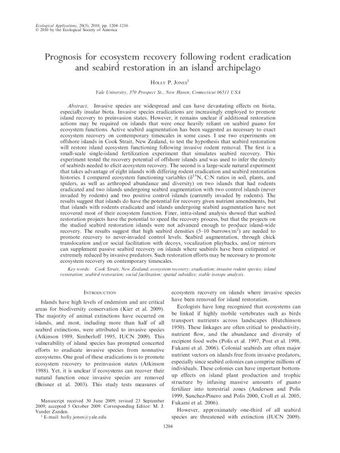Social assessment of inhabited islands for wildlife management and eradication
- Description:
- Eradication of introduced species from inhabited islands requires consideration of both technical and social feasibility. Historically, biologists have struggled to engage successfully in the social components of eradication planning. Island communities have unique features that require consideration in eradication planning. Social impact assessment is a powerful planning tool used widely outside of wildlife management. We outline the core components of a social impact assessment as it could be applied to eradication planning on inhabited islands. We summarise previous experience in social impact assessment and community engagement for introduced predator eradication on inhabited islands, and as an example develop a social profile for inhabited islands of the Hauraki Gulf of New Zealand. We conclude that social impact assessment has great potential to improve eradication feasibility assessment, and should be applied routinely in eradication scoping on inhabited islands.
- Display date:
- 2017
- Collections:
- Secretariat of the Pacific Regional Environment Programme (SPREP)
- Publisher:
- Taylor & Francis
- Content partner:
- Secretariat of the Pacific Regional Environment Programme (SPREP)
- Availability:
- Not specified
-
Copyright status: All rights reservedFind out more about what you are able to do with this itemThis item is all rights reserved, with means you'll have to get permission from Secretariat of the Pacific Regional Environment Programme (SPREP) before using it. For more information, please see our use and reuse page.What can I do with this item?Non-infringing useNZ copyright law does not prevent every use of a copyright work, and this item may be hosted by an international institute or organisation. You should consider what you can and cannot do with a copyright work.No sharingYou may not copy and/or share this item with others without further permission. This includes posting it on your blog, using it in a presentation, or any other public use.No modifyingYou are not allowed to adapt or remix this item into any other works.No commercial useYou may not use this item commercially.
Related items
Welcome and warm Pasifik greetings
The information on this site has been gathered from our content partners.
The names, terms, and labels that we present on the site may contain images or voices of deceased persons and may also reflect the bias, norms, and perspective of the period of time in which they were created. We accept that these may not be appropriate today.
If you have any concerns or questions about an item, please contact us.


